Main Body
Chapter 14. Back to the Big Picture: Globalization and Trends
Geoffrey Bird and Eugene Thomlinson
Learning Objectives
- Identify the impacts and benefits globalization has on the tourism industry, as well as tourism’s influence on globalization
- Use the PEEST model to describe political, economic, environmental, social, and technological trends affecting global tourism and travel
- Define key terms related to globalization
- Discuss the advantages and disadvantages of the interplay of globalization and tourism
Overview

In today’s integrated and interdependent world, multiple forces represent both opportunities and threats to tourism. This chapter explores the topic of globalization and how it relates to tourism, and then examines trends (political, economic, environmental, societal, and technological influences). The chapter closes with a reflection on what all this means for tourism in British Columbia.
Globalization and the Tourism Industry
Depending on the focus of the discussion, globalization can be defined in several ways. One broad definition is:
A complex web of social processes that intensify and expand worldwide economic, cultural, political and technological exchanges and connections. (Campbell, MacKinnon, & Stevens, 2011, p.4)
Globalization can also be simply described as the movement of goods, ideas, values, and people around the world. The term was first used in the early 1950s to recognize the increasing interdependence of economies and societies around the world. Globalization, however, has existed for centuries by way of evolving trade routes, including the slave trade, colonization, and immigration.
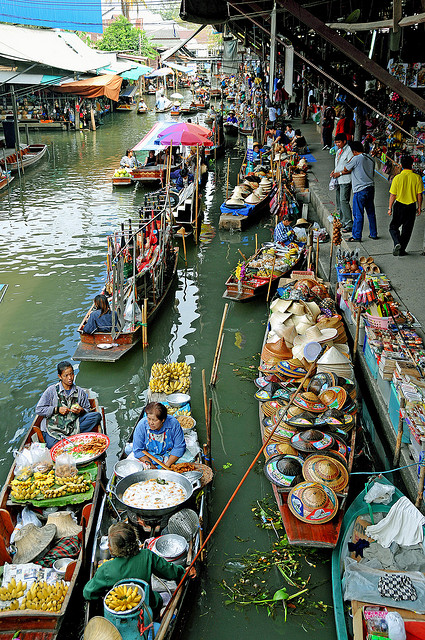
Today, we are divided into separate countries, each looking out for its own national self-interest. At the same time, other entities such as multinational corporations cross borders, which leads to global economic and political integration. Many benefits can result from global integration and interdependence, but we also need to heed its negative effects.
We can look at the relationship between globalization and tourism in several ways. For the purposes of this chapter, we will consider the impact of tourism and travel on globalization, and the impact of globalization on tourism. But first, let’s keep in mind why it is important for a local tour operator, general manager, or tourism business owner to think about globalization. More importantly, let’s consider where we should be looking to understand globalization and future trends. The rest of this chapter will address these topics.
The Impact of Globalization on Tourism
We can assess the impact of globalization on tourism from a number of perspectives. Here, we will discuss five examples: global mobility and ease of travel; population and demographic trends; terrorism, safety, and security; increased awareness of new destinations; and poverty.
Global Mobility and Ease of Travel
The advances made in transportation that have enabled global mobility are particularly significant. Modern aircraft, cruise ships, trains, and other modes of transport allow people to move quickly and relatively cheaply. Aircraft such as the Boeing 787 Dreamliner have opened new routes by creating an aircraft capable of flying “long haul” distances with a larger passenger load. Fast trains, road systems, and even city bike rental programs enable people to move, tour, and explore the world. These changes have allowed more people to travel more often in less time.

Ease of travel has also helped to overcome the barriers of fear, frustration, and expense. For example, an international banking system allows access to money almost anywhere in the world. Multinational corporations, which provide flights, local transportation, and accommodation and food, have allowed for “one-stop shopping” for travel bookings. Handheld devices have also changed the nature of travel in terms of what travellers do and how they interact with a destination, making it easier to, for example, select a restaurant, navigate a big city, or translate a foreign language. As a result, there are fewer unexplored places in the world anymore.
Population and Demographic Trends
According to the United Nations Population Fund (2015), the world population reached 7 billion in 2011 and is projected to exceed 9 billion by 2050. The population continues to increase, but not uniformly across the world. Birth and death rates are vastly different between developed and developing nations (Population Reference Bureau, 2013). In the developed world, there are more older citizens (over 60 years old) than there are children (under 14). This ratio, which first tilted in favour of older people in the late 1990s, is increasing (Business Insider, 2014). In contrast, in the developing world, this is not expected to occur until the middle of this century. This demographic divide is expected to widen between the richer and poorer countries of the world in the near future before possibly trending together in 40 or 50 years.
Other critical population trends affecting global development and tourism include the following (UNPF, 2015; World Tourism Organization, 2010; York, 2014):
- There are approximately 1.8 billion young people in the world (between 10 and 24 years), which is the largest that this group has ever been. They have tremendous opportunity for economic and social progress, resulting in a “youth dividend” for countries that embrace this demographic and their youthful vitality. This group is also travelling more than ever before in history.
- By the end of this century, approximately 40% of the world’s population is expected to be African. While birth rates are tending to fall around the world, they are still higher across Africa than in most other parts of the globe. This could result in a youth dividend or further exacerbate problems on the African continent.
- More people are migrating than ever before, with 232 million recent migrants compared with about 175 million in 2000. The top five destinations are the United States, the Russian Federation, Germany, Saudi Arabia, and the United Arab Emirates.
- More than half of the global population is urban, and the urbanization trend is expected to continue as people search for more jobs, more services, and more activities. Not everyone benefits equally though, as housing and other infrastructure struggles to keep up with the growing urban population.
To keep up with all of these changes in demographics, destinations will need to provide products and services to suit the older, culturally diverse, multi-generational travellers as well as the adventurous youth. Additionally, hiring and retaining staff will require a rethinking of human resource policies and procedures, compensation, and other aspects for the changing population of employees.
Terrorism, Safety, and Security
Terrorist attacks and political unrest globally have certainly disrupted tourism, but not halted it. The areas most affected, of course, are those where unrest has occurred and has been the focus of extensive media attention. A global terrorism index produced by the Vision of Humanity organization shows a fivefold increase in terrorist fatalities since 9/11 (MacAskill, 2014). The Islamic State (ISIS), Boko Haram, the Taliban, and al-Qaida are groups responsible for many of the 18,000 terrorism-related deaths in 2013, which represented an increase of 60% over the previous year.
While safety and security may not be the driving reasons for tourists selecting a particular destination, certainly a lack of safety and security often eliminates a location from travellers’ “wish lists.”
Safety and security for travellers is becoming more important as countries move to protect their citizens. Government agencies around the world produce advisories and warnings for their citizens to stay away from dangerous locations and political unrest.
Take a Closer Look: Travel Advisories
Travel advisories serve as warning systems for people from specific countries to avoid particular destinations because of actual or potential threats to citizens. To learn more about advisories for specific countries, see the Canadian government page at Canada’s Travel Advisories (http://travel.gc.ca/travelling/advisories) and compare them to Australia’s Travel Advisories (http://www.smartraveller.gov.au), the United States’ Travel Advisories (http://travel.state.gov/content/passports/english/alertswarnings.html), and the United Kingdom’s Travel Advisories (https://www.gov.uk/foreign-travel-advice).
The focus on safety and security has had several impacts on travellers. Most notably, security at most airports has been increased in an effort to protect people and planes (Flight Global, 2015). Screening procedures can take longer and some items are no longer allowed on board. Other security requirements, such as showing passports and providing fingerprints, have been implemented for entry into some countries. While all acts of terrorism cannot be stopped, the tourism industry is attempting to provide as much safety and security as it can.
Increased Awareness of New Destinations
Another influence of globalization on tourism is a greater awareness of destinations and the range of leisure activities, sites, and cultures to visit around the world. Generating knowledge of a destination is obviously a key first step in marketing a destination, and this is achieved by way of travel shows, films, blogs, and other forms of communication. The competition to attract visitors is fierce considering the sheer number of places available for travel; it can be easy to get lost in the noise of global competition.
Poverty

Globalization has contributed to increased demand for goods and services and overall economic growth, with the result of global poverty having decreased over the years. However, at the same time, the gap between the richest and poorest has expanded. A significant portion of the world’s population is simply unable to participate in, or benefit from, tourism. The economic gains from a tourism economy in a developing country such as Honduras versus a developed country such as Canada is unequal. Simply put, not everyone has the same opportunities to profit. Environmental costs are also unevenly distributed in the world, with poor countries lacking the resources to adapt to impacts (such as droughts, increased disease, soil erosion), and shouldering the majority of the repercussions of phenomena such as global warming.
Another way to analyze the interplay between tourism and globalization is to consider the reverse view: the impact of tourism on globalization.
Impact of Tourism on Globalization
In this section, we will look at tourism as a global force — for peace, for cultural homogenization, for commodifying cultures, and for shaping the way we see the world.
Tourism as a Force for Peace
In the 1980s, a popular hypothesis was that tourism supported global peace by allowing travellers to learn about other cultures and meet people from other nations, as well as offering benefits accrued from international business. Peace is an obvious requirement for tourism if the industry is to be robust and sustainable. However, to date, there is little empirical evidence to support the claim that tourism fosters peace, however attractive as the idea may be.
Tourism as Cultural Homogenizer

Nevertheless, tourism does offer the opportunity to teach people about how to respect other cultures. Some argue that globalization has a homogenizing effect on cultures, as Western values are spread through music, fashion, film, and food, rendering one culture indistinguishable from the next.
Some beliefs and values, such as embracing equality and diversity, or the need to protect children from harm, should be shared around the world. In the context of tourism and travel, these two issues are significant. For instance, companies need to ensure that their human resource practices are consistent and fair throughout the world. Exploiting children for sex is illegal, punishable in both the country visited and the home country of the tourist; some airlines and hotels are actively involved in supporting the prohibition of child sex tourism. Travellers are expected not to deface heritage sites or take rare or endangered natural or cultural objects as souvenirs. Such regulations speak to the universality of certain values and beliefs, which we all are required to follow as global citizens.
Tourism as Commodifier

Another possible influence of tourism on globalization is the process of cultural commodification, which refers to the drive toward putting a monetary value on every aspect of culture, from buying a sculpture stolen from an ancient temple, to buying endangered objects such as ivory and coral. This trend results in the degradation or devaluing of cultural values and beliefs and was explored in Chapter 12 on aboriginal tourism.
As one of the world’s largest industries, tourism impacts local, regional, and global economies. Resorts dot coastlines around the world and offer a welcome respite from colder climates to anyone wishing to experience a tropical beach, as well as the local culture and nature. While benefit comes to the community in the form of jobs, more often than not the larger share of the wealth leaks offshore. In response, local entrepreneurs and aid organizations have helped with initiatives that embrace local ownership in order for the wealth generated from tourism to stay in country. Community-based tourism, responsible tourism, and social entrepreneurship all aim to bring greater benefit to local communities.
Tourism As a World View
Tourism is also a major influence in how we see and understand the world. Keith Hollinshead (2006) refers to it as tourism world-making, or the way in which a place or culture is marketed and/or presented to tourists. Unlike local people, travellers experience a place for a few days, with limited knowledge of the culture and local way of life. Some visitors rely on available tourist information to make the most of the experience and to see the highlights. Others turn away and attempt to “go local” in search of the authentic experience with the belief that they can truly understand a place by avoiding the tourist sites.

If tourists stay in their resort in a given country, their only interaction with a local culture may be the staff at the hotel. In many cases, visitors experience a place in a fragmented, disconnected way, seeing only a portion of a place. How much can be gained from such short and transient experiences? This debate leads to one of the often discussed, if not hotly debated, topics in tourism, that of authenticity of experience. In 1976, Dean MacCannell released his book The Tourist: A New Theory of the Leisure Class, in which he argued that even those events that seem to be authentic are in some way staged for the visitor (Drumond, 2013).
Take a Closer Look: Cannibal Tours
In 1988, Dean O’Rourke shot a documentary profiling the experiences of jet-set travellers as they encountered locals in Papua New Guinea. The movie highlights the challenges that happen when visitors meet with “the other,” in that their expectations shape the behaviours of the locals. The movie features interviews with the locals as well as tourists. To watch the movie, visit Cannibal Tours: https://www.youtube.com/watch?v=KUQ_8wl93HM
Now let’s look at some predominant trends in the industry.
Top Trends
Throughout this textbook, a range of trends have been identified that exemplify some of the forces and influences associated with globalization. This section revisits some of those trends.
Take a Closer Look: Trends Reports
In the tourism and hospitality industry, and in global business, many minds work to decipher industry trends in order to keep informed and make smart decisions. One example is the Global Competitiveness Report, a product of the World Economic Forum, which can be read here: Global Competitiveness Report, 2014-2015: http://www.weforum.org/reports/global-competitiveness-report-2014-2015
The UNWTO produces a World Tourism Barometer that is updated regularly, available on a subscription basis: http://mkt.unwto.org/barometer
First, let’s take a closer look at the difference between trends and fads. While trends and fads may look the same initially, fads will almost always have a definite start and end; they are finite. Examples include tornado tourism (storm chasing tours) and shack tourism (where affluent people stay in impoverished neighbourhoods), which appear destined to disappear as quickly as they appeared.
In contrast, trends influence things for long periods of time, potentially shifting the focus or direction of industry and society in a completely different direction. For example, the growing awareness of tourism impacts seems to be a long-term trend, leading to greater focus on developing sustainable experiences, products, and services for the mindful traveller. With hindsight, we can identify the trends versus the fads. Predicting the future, however, is not as easy.
A useful tool to use in the analysis of global trends is PEEST, an acronym for political, economic, environmental, social, and technological forces that affect the person, organization, or destination under study. Let’s delve into PEEST in more detail.
Take a Closer Look: Analysis Tools
The more complicated the world gets, the more it’s imperative that business leaders and decision-makers employ a framework for analyzing trends. While this chapter uses a PEEST approach, other acronyms include PEST (omitting the environmental review), or PESTLE (including legal and environmental reviews). For more information about these frameworks, to access templates, and learn to use them in your own analysis, visit PEST Analysis Free Template: www.businessballs.com/pestanalysisfreetemplate.htm
Political Trends
While we may be intrigued by global issues and their macro implications on the world in which we live, we also need to pay attention to local politics and policies. Let’s have a look at political trends from different scales.
Global Policies
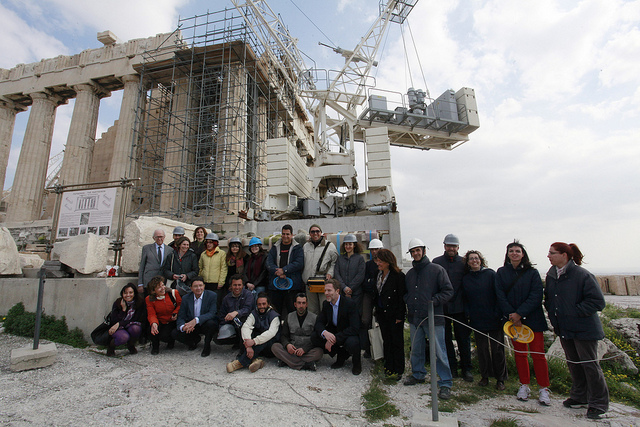
According to the UNWTO report Policy and Practice for Global Tourism, whereas “growth and development were major priorities in the period since the 1950s, the new millennium is characterised by intense destination competition” (2011, p.3). Traditional Western destinations are under pressure to formulate policies and create strategies and spending patterns that will enable them to compete with emerging destinations.
Spotlight On: The International Civil Aviation Organization
The International Civil Aviation Organization (ICAO) was created in 1944 with the signing of the Chicago Convention as a specialized agency of the United Nations. It works with 191 countries to help develop aviation policies and build capacity in countries with underdeveloped air industries. For more information, visit the International Civil Aviation Organization website: www.icao.int
Each country is responsible for creating and funding its own organizations responsible for tourism development at the federal, state/provincial, and local level. In the United States, for example, the Office of Travel and Tourism Industries (OTTI) is responsible for actively participating in domestic and international policy creation. One such policy is a memorandum of understanding with China regarding leisure group travel. The OTTI is engaged in international tourism discussions with organizations such as the OECD and APEC (see Spotlight On below), and has a representative at UNWTO (OTTI, n.d).
Spotlight On: International Economic Groups
On the international stage, several groups are responsible for developing and setting policy that has an impact on tourism development. Two examples are:
The Organisation for Economic Co-operation and Development (OECD) has 31 member countries that gather to discuss a range of policy issues, with a special committee dedicated to tourism. For more information, visit the Organisation for Economic Co-operation and Development website: www.oecd.org/cfe/tourism/
The Asia-Pacific Economic Cooperation (APEC) forum also has a Tourism Working Group that recognizes the importance of sustainable tourism development for countries in the Asia Pacific Rim region. For more information, visit the Asia-Pacific Economic Cooperation website: www.apec.org/Groups/SOM-Steering-Committee-on-Economic-and-Technical-Cooperation/Working-Groups/Tourism.aspx
National Policies
While from a policy perspective, countries such as New Zealand, Australia, the United States, and the United Kingdom have embraced tourism growth through a planned approach, tourism policy in Canada tends to struggle in comparison to the attention given to other sectors such as oil and gas.
A number of organizations, including the Conference Board of Canada and the Tourism Industry Association of Canada, have made recommendations for strong government policy support that could help strengthen the industry. Two key policy reforms suggested include (Deloitte, 2013):
- Changes to air travel regulations, such as increasing air access, phasing out rents paid by airports to the federal government, and transferring airport ownership to local authorities
- Streamlining the travel visa issuance process, using technology to make it faster for visitors to obtain visas and continue to pursue visa-related partnerships with other countries
Take a Closer Look: Passport to Growth — How International Tourist Arrivals Stimulate Canadian Exports
A 2013 report from Deloitte details the ways in which the tourism industry supports overall economic development in Canada. It highlights industry trends and summarizes recommendations made by tourism industry advocates for enhancing the sector. For more information visit, Passport to Growth [PDF]: http://www2.deloitte.com/content/dam/Deloitte/ca/Documents/press-releases/ca-en-tourism-and-trade.pdf
Spotlight On: The Five Country Conference
The Five Country Conference (FCC) is a partnership of the governments of Australia, Canada, the New Zealand, United Kingdom, and the United States. Their goal is to work together to restrict the travel of individuals who pose security and immigration risks, and at the same time increase the efficiency and customer service for other travellers. For more information, visit www.fivecountryconference.org
The trend here may be the ongoing need to convince and lobby governments at all levels of the potential of tourism and the value of strategic planning and investment in tourism. It is perhaps not surprising that the tourism and hospitality sector, with such diverse organizations involved, struggles to find a single voice at times. This leads to a cycle where the sector rallies around initiatives such as Expo 86 and the 2010 Olympic and Paralympic Winter Games, and then experiences a period of fragmentation.

Environmental Trends
The United Nations Intergovernmental Panel on Climate Change has produced irrefutable evidence that climate change is human-made. We are already witnessing significant shifts in weather patterns, and climatic events such as tornadoes, drought, and flooding are occurring with greater frequency and impact. Yet dependence on a global economy fuelled by population growth and ever-increasing demand for consumer goods has led to significant debate as to how to respond to climate change, although action is clearly required.
Environmental Impacts
From a tourism and travel perspective, we have seen examples throughout the chapters of this textbook of how climate change is impacting tourism. In the transportation sector, drastic temperature changes from sudden ice thaws to heatwave conditions affect highways and runways, landslides close road systems, and rising sea levels threaten infrastructure such as airports and cruise ship wharves. In the accommodations sector, coastal storms impact resorts, summer water shortages put pressure on resort communities, and unpredictable snowfalls close ski resorts. Food and beverage operators are facing increased food costs as drought conditions make growing certain crops more and more expensive. In the recreation and entertainment sector, both natural and built attractions are threatened by unpredictable weather patterns. And travel services providers struggle to stay abreast of the effects of superstorms and polar vortexes.
The question here is the extent to which we can globally respond to these impacts by adapting and mitigating climate change to foster more resilient forms of economic growth, of which tourism is a part. Does this mean less air travel? Possibly. The challenge for tourism is that our economic interdependence requires far-reaching transportation routes, be it by air, sea, or land.
Economic Trends
Like most other industrial sectors, tourism is affected by global economic trends. Tourism was initially negatively impacted after the global financial crisis of 2007-2008, with international tourism arrivals dropping globally (Papatheodorou, Rossello, & Xiao, 2010). However, the industry was quick to rebound, with the number of travellers increasing by 2010, surpassing the 1 billion mark in 2012 (UNWTO, 2014).
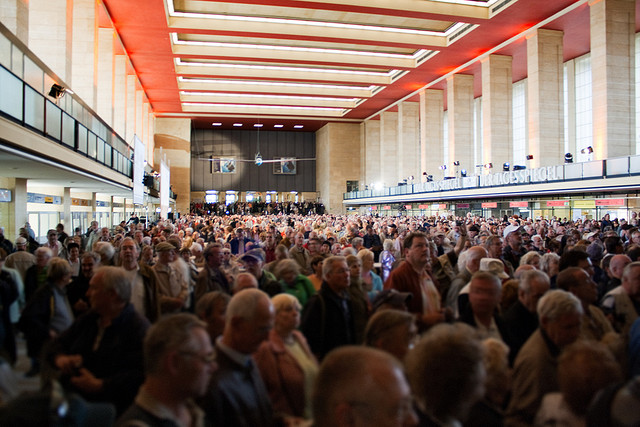
Economic uncertainties for the tourism industry have persisted, however, leading many industry insiders to monitor several economic trends, including collaborative consumption, shifts in emerging economies, and conscious consumerism.
Collaborative Consumption
Although the phenomenon of collaborative consumption, also known as the sharing economy, began before the global financial crisis, it gained strength as a result of it. Collaborative consumption is a blend of economy, technology, and a social movement where access to goods and skills is more important than ownership (Sacks, 2011).
Airbnb was one of the first, and arguably most well known, examples of the tourism sharing marketplace, but several other companies have joined it, including Zipcar, Uber, and Couchsurfing. According to Nielsen (2014a), more than two-thirds of global respondents to a poll are interested in joining this revolution. The impacts on the tourism industry are still to be determined, although young travellers, budget-conscious families, and tourists seeking authentic local experiences seem to be drawn to these services (Canadian Tourism Commission, 2014). This is one trend that is likely to persist for some time into the future.
Emerging Economies
In 2001, a new acronym was introduced into the economic world — BRIC. This refers to the growing economies of Brazil, Russia, India, and China (Northam, 2014). These turbo-charged emerging economies were growing fast and looking to be the new powerhouses in global economic circles, even forming political and economic alliances. South Africa joined the group in 2010 and they became known as the BRICS.
With this growth came travellers looking for new destinations to visit. Outbound tourism development from China has been especially energetic, with numbers increasing from 58 million in 2010 to almost 100 million in 2013 (Flannery, 2014). But all has not gone well for these emerging economies and only China has maintained the pace of expansion. Other countries have since joined the race, creating another new acronym — MINTS — for the countries of Mexico, Indonesia, Nigeria, Turkey, and South Korea. Time will tell where new tourism growth and opportunities arise in the frenetic global economy, and who will be the next powerhouse to watch.
Conscious Consumerism
Conscious consumerism, or socially conscious consumer behaviour, is another economic trend with implications for the tourism industry. This term refers to consumers who are using their purchasing power to shape the world according to their values and beliefs, leading organizations to project a more ethical or responsible image (Government of Canada, 2012).
This socially and environmentally responsible purchasing by many consumers (Freestone & McGoldrick, 2008) can direct travellers to more sustainable services and products. Destinations and businesses interested in pursuing this market need to be acutely aware of social and environmental issues, potentially ranging from organic produce and animal welfare to human rights (Shaw, Grehan, Shiu, Hassan, & Thomson, 2005). Some of the key principles for consideration by the tourism industry include an assumption that the traditional industrial model is not working and needs to be replaced, that awareness of the issues require a different mindset, and that change will come from the grassroots rather than from above (Pollack, 2012). This is a shift that has profitability and culture change firmly in its sights (Nielsen, 2014b).
Cultural and Social Trends
Defining culture as “a way of life” brings us to consider the implications of globalization as a defining influence in how we live and, therefore, who we are as individuals. Some argue that globalization has created a culture crisis, with values, beliefs, and identity all made secondary to economic interests and the pervasive and ever-growing nature of technology in our lives. Below are three cultural trends, followed by two societal trends.
The Tourist Experience as the Good Life
Some people are motivated to travel as a form of escape from the pressures of the globally interconnected world. Unplugging, where a hotel or resort offers no technological access in the form of Wi-Fi, television, or phones, is certainly one way to get people to slow down and, perhaps ironically, reconnect with themselves and loved ones. Biking, walking, small sailboat cruises, rural tourism, as well as the slow food movement are examples of experiences that simplify life in order to better appreciate and enjoy it.
Travel as a Time to Bond

Visiting friends and relatives, known in the industry simply as VFR, is a common and important subset of tourism demand worldwide. With their busy lives, people are seeking a moment, place, and activity to share with family or friends. In addition to the growing VFR trend is the increasing popularity of group travel, as exemplified in the sports tourism sector (see Chapter 6 on entertainment) with sports clubs and teams who travel together, and associations that bring together people with shared interests in cuisine, walking, birdwatching, or other avocations.
Global Migration
Certainly a trend in globalization is the significant movement of people around the world. For British Columbia, immigrants (35,160) and non-permanent residents (11,949) represented the main source of population growth in 2014, along with just over 10,000 people from other provinces (BC Stats 2015). The population of British Columbia as of January 1, 2015, was estimated at 4.6 million of which nearly 25% are a visible minority (BC Stats 2015). The largest groups are Chinese (10.0%), South Asian (6.4%), Filipino (2.2%), and Korean (1.2%) (British Columbia Ministry of Attorney General, 2008).
Implications for the tourism industry include a growing need to address the challenges of a multicultural workforce, including preconceptions related to customer service and management. It’s important for diverse teams to be able to work well together and to communicate well with visitors and guests.
Technology
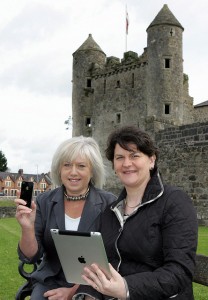
For many years, technology has been strongly tied to tourism as the industry has looked to take advantage of developments and changes, opening destinations and providing new products and services. From the early days of Thomas Cook’s first recognized tours, offering train rides to the seaside, to the adoption of mobile technology today, tourism and hospitality has incorporated technological advances into all aspects of the industry. Two key technology trends affecting tourism and hospitality today and into the foreseeable future are mobile technology and access.
Wireless Ways
Mobile technology and wireless connections affect many aspects of the tourism industry on a global scale. Mobile technology allows people increased freedom to negotiate their day-to-day lives while staying connected (Dickinson, Ghali, Cherrett, Speed, Davies, & Norgate, 2014). Online user-generated content, whether through social media (e.g., Facebook, Snapchat) or travel-rating sites (e.g., TripAdvisor, Zagat), is shaping where people go, where they stay and eat, and the types of activities they engage in.
Smartphones and applications (or apps) provide access to information and the ability for tourists to shape their travel en route, affecting tourism travel decisions and behaviours in a more fluid way than ever before (Kramer, Modsching, Hagen, & Gretzel, 2007; Wang, Park, & Fesenmaier, 2011). Travellers can book hotels instantly, searching for the best deals available. Mobile apps are replacing the hotel concierge by providing up-to-date information, along with maps and directions, for many of the desired activities at destinations.
Wireless technology has also given rise to location-based advertising, allowing product or service providers to market themselves when travellers are in the general area (Hopken, Fuchs, Zanker, & Beer, 2010). Attraction alerts and special offers, often triggered by applications, provoke the user’s attention to elicit an immediate response.
Internet access has become a standard requirement for accommodations, ahead of other amenities such as in-house restaurants or pools. The importance of mobile technology and applications is expected to increase as travellers become more independent and less reliant on packaged options (Buhalis & Law, 2008). Proponents of technology suggest that traditional ways of providing tourism and hospitality information will disappear as mobile technology becomes even more prevalent (Dickinson et al., 2014).
Advancing Access
Technological advances in transportation are affecting not only how people travel to and within destinations, but also the impacts that those forms of transportation are having on the environment. Transportation is one of the largest consumers of fossil fuels, and tourism is one of the biggest contributors to that consumption (Conrady, 2012); consequently the tourism industry is taking steps to improve sustainability and reduce impacts. For example, newer planes, such as the Boeing 787 Dreamliner, use less fuel, generate less noise, and produce fewer emissions than previous models (Boeing, 2015). Efforts are also being made to offer alternatives for tourism transportation (World Economic Forum, 2011), including increases in the number of electric cars available through rental agencies.
Transportation advances are also opening more access to the world for more people. In adjusted dollars, the cost of flights per mile has fallen by about 50% in the past 30 years (Thompson, 2013), allowing more people to travel. There are now even new vehicles for outer space that have created opportunities for people to begin to explore “the last frontier.” The cost of these flights is still prohibitively expensive for most people (approximately $20 million), but with continued advances in technology, this futuristic travel could eventually become commonplace.
Conclusion: The View from British Columbia
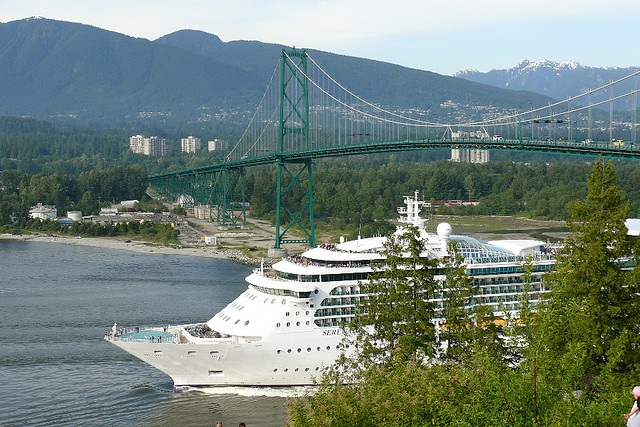
Tourism in BC is already being impacted by globalization. The doors of the province have opened to travellers around the world, but especially from emerging markets such as China. Shifting products and services to meet the needs and desires of these new visitors will require flexibility and creativity for BC’s tourism industry in the future.
BC has also been impacted by the increase in new destinations, fighting for share of the growing tourism economy. Social media and other recent innovations in communication will continue to grow in importance for BC to generate awareness of its many tourism products and services. BC’s many unique cultures and experiences will help keep the province competitive as long as the industry also recognizes the potential negative impacts that tourism can have.
Recognition of tourism’s importance in BC’s economy, along with supportive legislation and funding, is key to the long-term survival of the industry. At the same time, steps must be taken to prepare for the effects of climate change, with potentially shorter winters and reductions in precipitation. BC’s tourism industry is already feeling the effects of collaborative consumption as services such as Airbnb grow in popularity in the province. The spread of technological advances and improved wireless access will help the industry satisfy this aspect of the market, while also increasing the means to raise awareness with more potential visitors.
To take advantage of these global opportunities, British Columbia’s tourism industry will have to react quickly to existing and emerging trends. In the meantime, we hope this textbook will serve as foundation for emerging tourism and hospitality professionals as they continue to learn about the industry.
Key Terms
- Asia-Pacific Economic Cooperation (APEC): a forum that brings together countries from the Asia Pacific region (including Canada), and which has a Tourism Working Group that looks at policy development in a tourism context
- Authenticity of experience: a hot topic in tourism that started with MacCannell in 1976 and continues to today; discussion of the extent to which experiences are staged for visitors
- BRIC: an acronym for the growing economies of Brazil, Russia, India, and China
- BRICS: the acronym for the BRIC countries with the addition of South Africa
- Collaborative consumption: also known as the sharing economy, a blend of economy, technology, and social movement where access to goods and skills is more important than ownership (e.g., Airbnb)
- Conscious consumerism: refers to consumers using their purchasing power to shape the world according to their values and beliefs
- Cultural commodification: the drive toward putting a monetary value on aspects of a culture
- Fad: something taken up in a finite, short amount of time — can represent a valuable business opportunity, but investment can be risky
- Globalization: the movement of goods, ideas, values, and people around the world
- Homogenizing: making the same, as in the effect of tourism helping to spread Western values, rendering one culture indistinguishable from the next
- In country: a term to describe using a local-ownership approach in order for the wealth generated from tourism to stay in a destination
- International Civil Aviation Organization (ICAO): a specialized agency of the United Nations that creates global air policy and helps to develop industry capacity and safety
- MINTS: an acronym for the countries of Mexico, Indonesia, Nigeria, Turkey, and South Korea
- Organisation for Economic Co-operation and Development (OECD): an organization 31 member countries who gather to discuss a range of policy issues, with a special committee dedicated to tourism
- PEEST: an acronym for political, economic, environmental, social, and technological forces
- Tourism world-making: the way in which a place or culture is marketed and/or presented to tourists
- Trend: a phenomenon that influences things for a long period of time, potentially shifting the focus or direction of industry and society in a completely different direction
- VFR: an acronym for visiting friends and relatives; a tourism consumer market
Exercises
- What are three benefits of globalization in terms of tourism? What are three negative impacts due to global tourism?
- Why is it important for a local tour operator, general manager, or tourism business owner to think about globalization? Where should we be looking to understand globalization and future trends? Name three sources.
- How can you tell the difference between a fad and a trend?
- Identify two current political trends by reading this week’s headlines or scanning a social media news feed. What impacts do you see those trends having on tourism and hospitality?
- The claim of an authentic experience is a common promise for tourism marketers. Thinking back to previous chapters (e.g., Chapter 3 on accommodation, Chapter 6 on entertainment, Chapter 12 on Aboriginal tourism), name two ways visitors can determine whether an experience is authentic. In your own words, what is the value of authenticity, if any, in a globalized world?
- The industry has lobbied the Canadian government for policy changes that could help our country become a more competitive destination. Name two areas where these changes could be made.
- Name an economic trend that is prevalent in today’s news and media (e.g., the position of Canada’s dollar versus the U.S. dollar). List the five sectors of tourism, and next to each, identify two impacts this economic trend will have on the sector. Will the effects be the same across the industry? Or different?
- Name three environmental trends (e.g., climate change). For help, you can refer back to Chapter 10 on environmental stewardship.
- Destinations are beginning to recognize a trend toward travel as a bonding experience for families and groups. What kinds of experiences can be developed to attract this market? Name three examples.
- Thinking into the future, predict one trend in each PEEST area (political, economic, environmental, social, and technological) that you feel will have long-lasting effects on tourism and hospitality.
- Imagine you own a small tourism or hospitality business. Using one future trend you identified in the previous question, and referring back to Chapter 11 on risk management and legal liability, identify three ways you could mitigate the negative impacts of this trend.
Case Study: The Rise of Dark Tourism
A 2014 article in the The Atlantic, “The Rise of Dark Tourism,” profiled the increase in travel to destinations and cities related to war, famine, disease, or other dark cultural phenomena, often in real time.
The article primarily used examples of travel to war-torn areas of the Middle East. For instance, a tour that culminates at the Quneitra Viewpoint allows visitors to watch battles of the Syrian civil war in real time. Tour leaders include a retired Israel Defense Forces colonel who shared that tourists to the area “feel that they are a part of it. They can go home and tell their friends, ‘I was on the border and I saw a battle'” (Kamin, 2014, ¶ 2). Other tours travel to the Israeli border town of Sderot, an area on the Gaza Strip under heavy rocket fire.
According to Philip Stone, director of the Institute for Dark Tourism Research at the U.K.’s University of Central Lancashire, while war tourism is not a new phenomenon, the increased commercialization has marked a new trend. Dark tourism now has a more sophisticated infrastructure than the days when Thomas Cook took visitors to see hangings, and the increase in technology and interpersonal communications has caused this area of tourism to grow at a faster rate (Kamin, 2014).
The article cites media phenomena such as VICE videos (online documentaries) and celebrity chef Anthony Bourdain’s show Parts Unknown, as well as the growth of the adventure tourism industry, as contributing factors. They list hyper-extreme tour operators such as War Zone Tours and Wild Frontiers (both in operation since the 1990s) as pioneers of the sector. More recent examples include former journalist Nicholas Wood, who formed Political Tours, a company that takes around a year to plan small-group excursions to political hot spots such as Libya, to the tune of $7,000 per guest (Kamin, 2014).
In addition to group tours, FIT (fully independent travellers) are creating their own extreme experiences, such as joining protestors in Kiev’s Independence Square and visiting Tahrir Square in Egypt to witness the election of Mohammed Morsi (Kamin, 2014).
Travel to North Korea is also a growing market, doubling in size each year with between 6,000 and 7,000 people making the trip in 2013. Some travellers cite their visits to countries and areas such as these with motivating them toward becoming journalists and activists. Others state their experiences are therapeutic, helping them to understand their own difficult experiences or those of others, such as the military service of family members (Kamin, 2014). According to one of these tourists, “You go to the most extreme place in order to not be alone with your feelings. You really can’t be anywhere else but there” (Kamin, 2014, ¶ 25).
Refer to the Institute for Dark Tourism Research (http://dark-tourism.org.uk) and answer the following questions:
- Would you classify this type of travel as a trend, or a fad?
- The article seems to imply that dark tourism is an extension of adventure tourism. Do you agree? Why or why not?
- How does the concept of authenticity of experience factor into dark tourism?
- Imagine you are a citizen in a part of the world that is experiencing hardship and this type of tourism is increasing in your community. How might you feel about it?
- Imagine you go to a famous battlefield where Canadians had fought and died, such as Vimy Ridge the World War I battlefield in France. What are the visitor motivations and what is the outcome of the visitor experience?
- Would you classify visits to Ground Zero in New York as dark tourism? Why or why not?
- What are the implications for tourism operators in these areas in terms of risk management and legal liability?
References
British Columbia Ministry of Attorney General. (June 2008). The diversity of visible minorities and ethnic origins in BC. [PDF] Retrieved from www.welcomebc.ca/welcome_bc/media/Media-Gallery/docs/communities/visible_minorities_ethnic_origins.pdf
BC Stats. (March 15, 2015). Quarterly population highlights. Retrieved from www.bcstats.gov.bc.ca/StatisticsBySubject/Demography.aspx
Boeing. (2015). About the 787 family. Retrieved from www.boeing.com/boeing/commercial/787family/background.page?
Buhalis, D. & Law, R. (2008). Progress in information technology and tourism management: 20 years on and 10 years after the internet – the state of eTourism research. Tourism Management, 29, 609-623.
Business Insider. (2014). George Magnus: These 5 big demographic trends are shaping the world right now. Retrieved from http://www.businessinsider.com/5-demographic-trends-shaping-the-world-2014-4
Campbell, P., MacKinnon, A & Stevens, C. (2010). Global studies. Chichester, Surrey, UK: Blackwell.
Canadian Tourism Commission. (2014). Three travel trends to watch in 2014. Retrieved from http://en-corporate.canada.travel/content/ctc_news/travel-trends-2014
Conrady, R. (2012). Status quo and future prospects of sustainable mobility. In Conrady, R. & Buck, M. (Eds.). Trends and issues in global tourism, pp. 237-260.
Deloitte. (2013). Passport to growth: How international arrivals stimulate Canadian exports. [PDF] Retrieved from http://www2.deloitte.com/content/dam/Deloitte/ca/Documents/press-releases/ca-en-tourism-and-trade.pdf
Dickinson, J.E., Ghali, K., Cherrett, T., Speed, C., Davies, N., & Norgate, S. (2014). Tourism and the smartphone app: capabilities, emerging practice and scope in the travel domain. Current Issues in Tourism, 17(1), 84-101.
Drumond, A. (2013). Contextualizing authenticity in tourism: An examination of postmodern tourism theory. Retrieved from https://blogs.commons.georgetown.edu/cctp-725-fall2013/2013/12/14/contextualizing-authenticity-in-tourism-an-examination-of-postmodern-tourism-theory/#_edn1
Flannery, R. (2014, March 19). China’s travel and tourism growth slower than expected; Gov’t red tape hurts business. Forbes. Retrieved from www.forbes.com/sites/russellflannery/2014/03/19/chinas-travel-and-tourism-growth-slower-than-expected-govt-red-tape-hurts-business/
Flight Global. (2015). Airport security. Retrieved from http://www.flightglobal.com/features/9-11/airport-security/
Freestone, O., & McGoldrick, P. (2008). Motivations of the ethical consumer. Journal of Business Ethics, 79(4): 445-467.
Government of Canada. (2012). Socially conscious consumer trends: sustainability. [PDF] Retrieved from www5.agr.gc.ca/resources/prod/Internet-Internet/MISB-DGSIM/ATS-SEA/PDF/6308-eng.pdf
Hollinshead, K. (2006). ‘Worldmaking’ and the transformation of place and culture: The enlargement of Meethan’s analysis of tourism and global change. In Ateljevic, I., Pritchard, A. & Morgan, N., (Eds.) The critical turn in tourism studies: innovative research methods. Oxford, UK: Elsevier, pp. 165-195.
Hopken, W., Fuchs, M., Zanker, M., & Beer, T. (2010). Context-based adaptation of mobile applications in tourism. Information Technology and Tourism, 12, 175-195.
Kamin, D. (2014, July 15). The rise of dark tourism. Retrieved from www.theatlantic.com/international/archive/2014/07/the-rise-of-dark-tourism/374432/
Kramer, R., Modsching, M., Hagen, K., & Gretzel, U. (2007). Behavioural impacts of mobile tour guides. Information and Communication Technologies in Tourism 2007: Proceedings of the International Conference in Ljubljana, Slovenia, 109-118.
MacAskill, H. (2014, Nov 18). Five-fold increase in terrorism fatalities since 9/11, says report. The Guardian. Retrieved from http://www.theguardian.com/uk-news/2014/nov/18/fivefold-increase-terrorism-fatalities-global-index
Nielsen. (2014a). Is sharing the new buying? Retrieved from www.nielsen.com/us/en/insights/reports/2014/is-sharing-the-new-buying1.html
Nielsen. (2014b). Doing well by doing good. Retrieved from www.nielsen.com/us/en/insights/reports/2014/doing-well-by-doing-good.html
Northam, J. (2014, May 13). The global economy: a world of acronyms. NPR. Retrieved from www.npr.org/blogs/parallels/2014/05/13/311852601/the-global-economy-will-mint-countries-be-the-new-brics
OTTI. (n.d.). Office of Travel & Tourism Industries – Tourism policy. Retrieved from http://travel.trade.gov/about/tourism_policy.html
Papatheodorou, A., Rossello, J., & Xiao, H. (2010). Global economic crisis and tourism: consequences and perspectives. Journal of Travel Research, 49(1), 39-45.
Pollack, A. (2012). Conscious travel: Signposts towards a new model for tourism. 2nd UNWTO Ethics and Tourism Congress. Retrieved from http://conscious.travel/
Population Reference Bureau. (2013). 2013 World population data sheet. Retrieved from www.prb.org/Publications/Datasheets/2013/2013-world-population-data-sheet.aspx
Sacks, D. (2011). The sharing economy. Fast Company, 155, 88-131.
Shaw, D., Grehan, E., Shiu, E., Hassan, L., & Thomson, J. (2005). An exploration of values in ethical consumer decision making. Journal of Consumer Behaviour, 4(3), 185-200.
Thompson, D. (2013, Feb 28). How airline ticket prices fell 50% in 30 years (and why nobody noticed).The Atlantic. Retrieved from www.theatlantic.com/business/archive/2013/02/how-airline-ticket-prices-fell-50-in-30-years-and-why-nobody-noticed/273506/
United Nations Population Fund (UNPF). (2015). World population trends. Retrieved from http://www.unfpa.org/world-population-trends
UNWTO. (2011). Policy and practice for global tourism. Retrieved from http://www2.unwto.org/publication/policy-and-practice-global-tourism
UNWTO. (2014). World tourism highlights 2014. [PDF] Retrieved from http://dtxtq4w60xqpw.cloudfront.net/sites/all/files/pdf/unwto_highlights14_en.pdf
Wang, D., Park, S., & Fesenmaier, D.R. (2011). An examination of information services and smartphone applications. 16th graduate students research conference, Houston, TX. Retrieved from http://scholarworks.umass.edu/cgi/viewcontent.cgi?article=1179&context=gradconf_hospitality
World Economic Forum. (2011). Repowering transport: Project white paper. [PDF] Retrieved from www3.weforum.org/docs/WEF_RepoweringTransport_ProjectWhitePaper_2011.pdf
World Tourism Organization. (2010). Demographic change and tourism. World Tourism Organization, Madrid, Spain.
York, G. (2014, Aug 12). Population boom: 40% of all humans will be African by end of century. The Globe and Mail. Retrieved from http://www.theglobeandmail.com/news/world/africa-to-experience-population-boom/article19998373/
Attributions
Figure 14.1 Around the world by Arti Sandhu is used under a CC-BY-NC 2.0 license.
Figure 14.2 Bye Floating Market by Dennis Jarvis is used under a CC-BY-SA 2.0 license.
Figure 14.3 Official airport opening by City of Vancouver Archives is used under a CC-BY 2.0 license.
Figure 14.4 Small kid playing around by Thomas Frost Jensen is used under a CC-BY 2.0 license.
Figure 14.5 Patriotic Kick Line by Peter Lee is used under a CC-BY-NC 2.0 license.
Figure 14.6 Dancers at Germaine’s Luau by Adam Theo is used under a CC-BY-NC 2.0 license.
Figure 14.7 Maesa Elehant Camp by Dennis Jarvis is used under a CC-BY-SA 2.0 license.
Figure 14.8 Secretary-general of UNWTO visits Greece by UNWTO is used under a CC-BY-NC-ND 2.0 license.
Figure 14.9 Backing the Bid by Martin Deutsch is used under a CC-BY-NC-ND 2.0 license.
Figure 14.10 Last call by SnaPsi is used under a CC-BY-NC-ND 2.0 license.
Figure 14.11 Team BC first at Western Canada Summer Games by UNWTO is used under a CC-BY-NC-ND 2.0 license.
Figure 14.12 Arlene Foster Launches New Tourism Apps by DUP photos is used under a CC-BY-NC-ND 2.0 license.
Figure 14.13 Serenade of the Seas, bound for Alaska, sails out of the Vancouver harbour by Nathan is used under a CC-BY-NC-ND 2.0 license.

